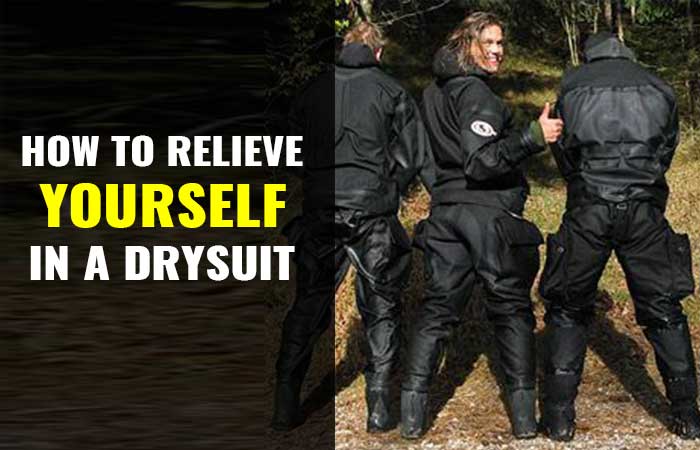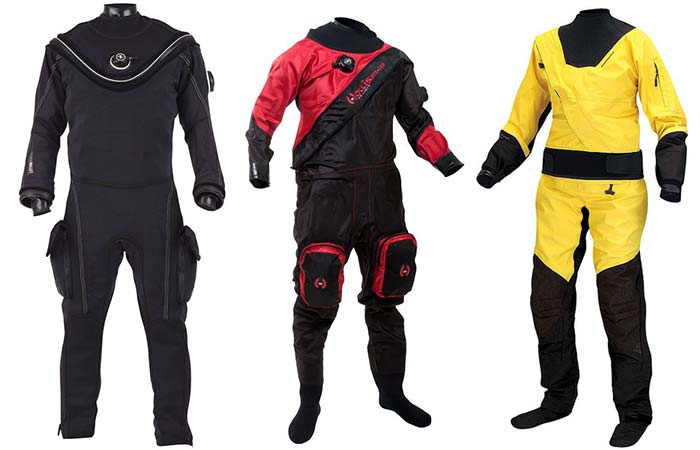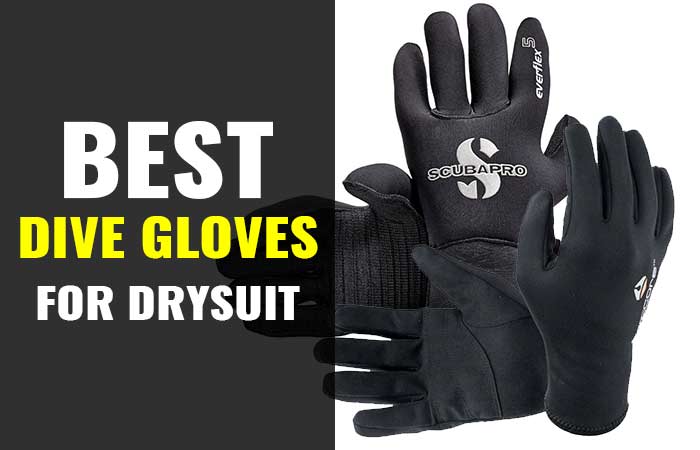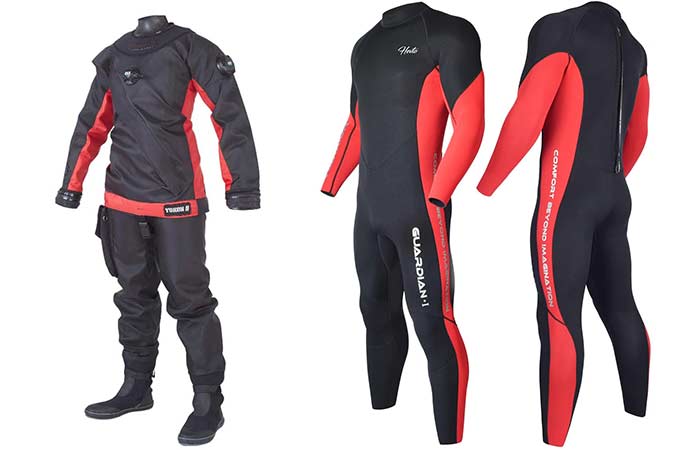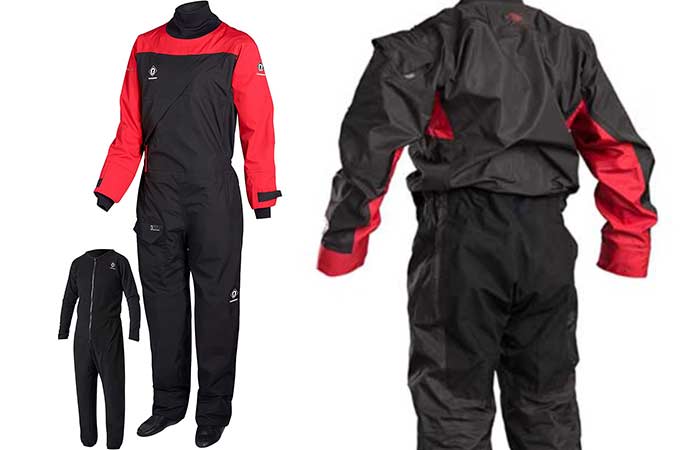How do Drysuits Work to Keep you Warm?
A drysuit, as its name suggests, is meant to keep the wearer dry and warm while in the water especially where temperatures are quite low. It basically makes it possible for you to comfortably stay under water for long periods of time. This contrasts with a wetsuit which also keeps you warm but does so by allowing water to reach the skin.
Basically, drysuits use zippers and seals at wrists, ankles and neck to lock water out. As a result, the body thus has a layer of air between it and the drysuit keeping it warm. Depending on the type of wetsuit and the temperature of the water, you may need additional garments to improve on the comfort and warmth of the drysuit.
How does a Drysuit work?
A drysuit works by providing a watertight seal at the neck (or face for those with hoodies), wrists and ankles. This keeps the water away from the body and traps a layer of air between the skin and the drysuit.
This layer of air acts as an insulation that traps body heat within the drysuit to keep you warm. With the addition of undergarments, you can be very warm even in very cold waters.
The type and thickness of the drysuit also determines how warm you will be. Also, the quality and tightness of the seal at the hands, ankles and neck determines how dry and warm the inside of the drysuit will be.
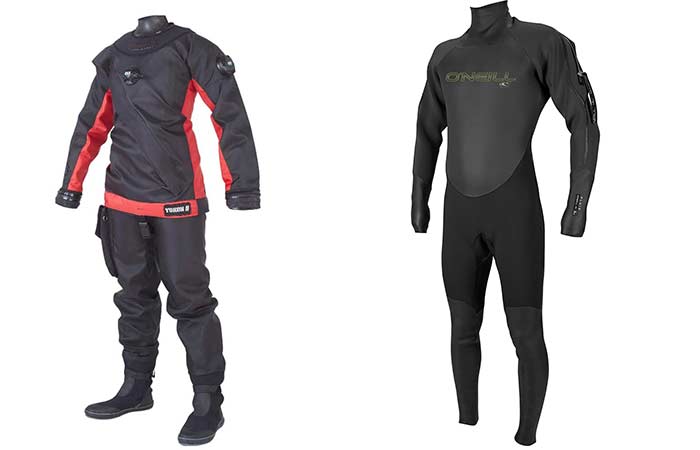
How do Drysuits keep you Warm?
Drysuits provide warmth and dryness by keeping the water away from your body. This is made possible by sealing out water from entering through seals at the ankles, wrists and neck (or face for those with hoodies). With water kept out away from the skin, you won’t get wet and cold.
The watertight seal provided by the drysuit traps a layer of air between the suit and your skin. This layer of air traps the warmth coming from the body keeping you warm. The air can also be pumped under the drysuit before heading into the water.
Also, the undergarments you put on under the drysuit trap some more heat from the body making the inside of the drysuit even warmer.
These aspects are so effective at preserving warmth that you can be sweating inside the drysuit when the water around you is ice cold. For this reason, you need to determine accurately how many layers of undergarments you need to be just comfortably warm and not hot.
Where can you use Drysuits?
Drysuits can be worn in the following conditions:
- In waters with temperatures below 15°C.
- Where you would be staying submerged in cool waters for extended periods of time.
- When working in or around hazardous liquids and gases. You’d also need a helmet, gloves, boots and other protective gear.
As drysuits are quite good at keeping you dry and warm, you won’t need them when diving in warm waters as they’ll quickly heat up the air around your body.
How do you get in a dry suit?
A drysuit has a full-body design covering from the ankles and feet to the neck and arms. To get into one, follow the steps below:
- Put on the right thickness and amount of undergarment. Ensure it keeps you comfortable at all times while in the water or other working area.
- Open the zipper at the neck region or the whole top part of the drysuit.
- Push in the legs ensuring a tight but comfortable fit at the ankles when done.
- Push in the arms ensuring a tight and comfortable seal at the wrists.
- Zip up the front or back of the drysuit all the way to the neck region.
- Seal the neck region for a tight yet comfortable fit.
- If the drysuit has a hood, ensure it fits tightly but comfortably still.
You can add other protective pieces of gear and anything else you’d want to use such as boots, fins, gloves, oxygen tanks and others.
Types and Materials for Drysuits
The main types of drysuits you’ll find on the market are as follows:
Neoprene Drysuits
These are among the most common drysuits used by divers and are made of high-quality neoprene materials. They’re favored for many reasons hence the popularity.
Pros
- Very warm
Neoprene drysuits are very warm as they provide a good seal around the body. If you get one that’s thick enough, you can dive in just about any degree of water and you’ll be all fine.
- They’re affordable
Compared to other drysuits at similar thicknesses, neoprene suits are quite affordable and last long when well taken care of.
Cons
- Neoprene drysuits tend to be a bit bulky. This means they take up lots of space when packing your gear for the beach trip.
- They are rigid and stiff. This makes them harder to put on and off from the body.
- Neoprene suits are also known for their high buoyancy levels. This means that they will tend to push you upwards towards the surface of the water. This is a good and bad thing. The good version of it is that it allows you float even when water has broken into the drysuit. On the negative side, it’ll try pushing you upwards instead of keeping you in the water at a certain level.
Membrane Drysuits
These are usually called shell drysuits as they simply provide a watertight shell around the body without any form of thermal insulation. If you need to keep warm in these ones, you’ll have to use a few layers of undergarments on your body.
The main types of membrane drysuits are as follows:
Vulcanized rubber drysuits
Vulcanized rubber is made by hardening normal rubber with sulfur at high temperatures. The resulting material is quite tough and inflexible and a drysuit made from it is meant for a few specific purposes. These include contaminated environments as it almost eliminates the risk of getting punctured.
Besides this, drysuits made of vulcanized rubber are easy to repair. The downside to this is that it makes them stiff and thus they restrict movements in the water.
Tri-laminate drysuits
Second in popularity to neoprene drysuits are tri-laminate drysuits made of layers of rubber and nylon. The result is a high quality drysuit that is easy to get in and out of and is both tough and lightweight.
Tri-laminate drysuits tend to be generally baggier and are thus easier to get in and out of.
Given their design, they pack into a small volume which can be easily carried around without a fuss. They’re much easier to pack and travel with compared to both vulcanized rubber and neoprene drysuits.
From the three types of drysuits, you can choose yours depending on the situation you’ll be diving in as follows:
- If you dive in very cold waters for long periods of time, a neoprene drysuit will be the best fit as it’ll keep you warm and for a long time.
- If you dive in areas with contamination or in areas with sharp objects likely to damage your drysuit, go for vulcanized rubber ones.
- If you travel a lot and dive in slightly warm waters, you’re best suited to a tri-laminate drysuit.
With time, research and experience, you’ll know exactly what type of drysuit best suits your needs.
More on Drysuits

